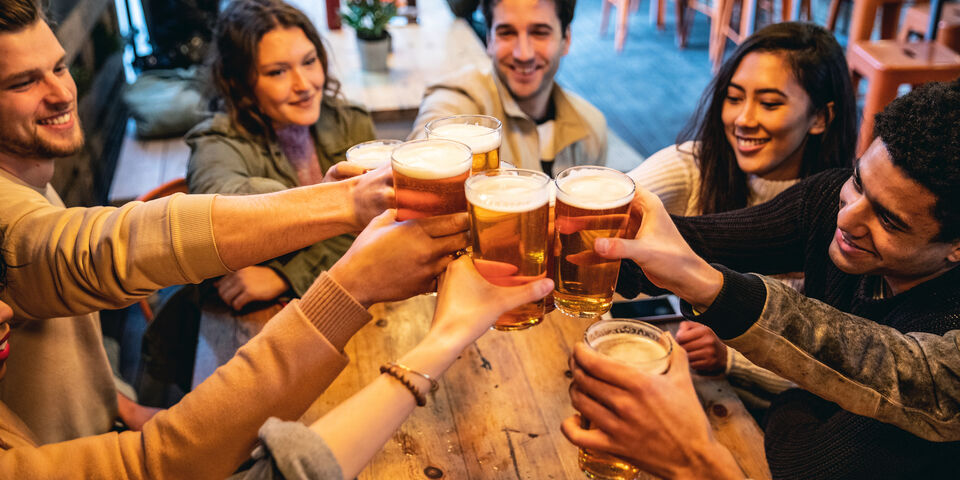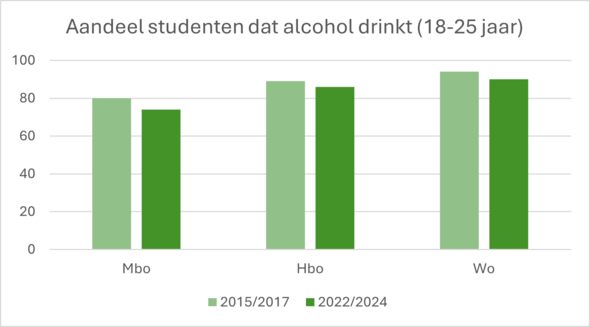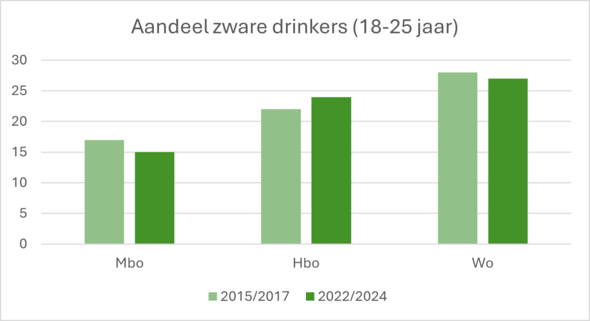About eighty percent of young people drink alcohol occasionally, according to data from the RIVM (National Institute for Public Health and the Environment), the Trimbos Institute, and Statistics Netherlands (CBS). The figures are based on health surveys conducted between 2022 and 2024.
That’s six percentage points lower than in the previous survey from 2015–2017, when 86 percent of young adults aged 18 to 25 said they drank alcohol. Among university students, alcohol use remains the highest at 90 percent. In universities of applied sciences (hbo) it’s 86 percent, and in vocational education (mbo) 74 percent.
The proportion of “heavy drinkers” among young people, however, has hardly declined—and in universities of applied sciences, it has even increased. Roughly one in four higher education students drinks at least once a week, consuming six or more drinks (for men) or four or more drinks (for women) in one sitting.
Long-term and frequent alcohol use brings greater risks than just a bad hangover: it can lead to brain or liver damage, among other health problems. For that reason, in late 2018 the Dutch government, educational institutions, and even beer brewers signed the National Prevention Agreement. One of its goals is to cut the number of heavy-drinking students in half.
The study also shows that an increasing number of students are following the official guidelines for alcohol consumption. According to the 2015 Dutch Dietary Guidelines issued by the Health Council, the advice is to avoid alcohol altogether or limit intake to one drink per day. About 25 percent of university students, 31 percent of students at universities of applied sciences, and 39 percent of vocational students adhere to that guideline.
This article was translated using AI-assisted tools and reviewed by an editor.




Discussion